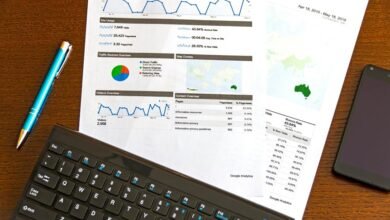2105275799 Mapping Trends in Mobile Data Breakdown

The report “2105275799 Mapping Trends in Mobile Data Breakdown” presents a comprehensive analysis of mobile data consumption patterns. It identifies key statistics reflecting current usage, alongside demographic and regional disparities. The implications of these trends are significant, particularly with the emergence of technologies like 5G. Understanding these dynamics raises critical questions about equitable access and future user experiences, prompting further exploration into the evolving mobile landscape.
Current Mobile Data Usage Statistics
As of 2023, mobile data usage has reached unprecedented levels, with global consumption surpassing 77 exabytes per month.
This remarkable mobile data growth underscores evolving user behavior, as individuals increasingly rely on mobile platforms for communication, entertainment, and information access.
The shift towards data-intensive applications and services reflects a profound transformation in how users interact with technology, emphasizing the demand for freedom and connectivity.
Demographic Variations in Mobile Data Consumption
Variations in mobile data consumption across different demographics reveal significant insights into user behavior and preferences.
Age groups exhibit distinct usage patterns, influenced by education backgrounds and income levels. Urban versus rural settings further delineate consumption habits, reflecting varying device preferences.
Cultural influences also play a crucial role, shaping how individuals engage with mobile technology and prioritize data usage according to their unique contexts.
Regional Trends in Mobile Data Access
A significant disparity exists in mobile data access across different regions, reflecting a complex interplay of infrastructure, economic development, and regulatory environments.
Urban accessibility often contrasts sharply with rural connectivity, where regional disparities hinder equitable access.
Bandwidth availability remains critical, as urban areas typically enjoy superior infrastructure, leaving rural populations with limited options and exacerbating the divide in digital access and opportunities.
Future Implications of Mobile Data Trends
The disparities in mobile data access across regions not only highlight current inequalities but also foreshadow significant future implications for digital equity and economic development.
5G advancements promise enhanced user experience, yet they also raise privacy concerns.
As data monetization becomes prevalent, equitable access will be crucial in ensuring that all regions benefit from technological progress, avoiding further exacerbation of existing disparities.
Conclusion
In conclusion, the report illustrates that as mobile data consumption continues to evolve, disparities in access and usage patterns remain pronounced across different demographics and regions. The adage “knowledge is power” resonates here, emphasizing the importance of equitable access to mobile data. As technology advances, particularly with the rollout of 5G, ensuring that all populations can harness these developments will be crucial for fostering economic opportunities and enhancing user experiences across the globe.





